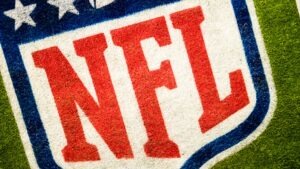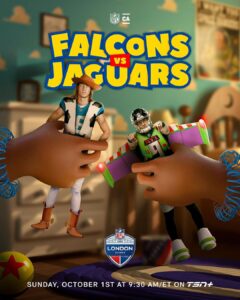“You’ve Got a Friend in Me”: How the NFL Introduced Football to a New Target Market
Published on October 17, 2023, 3:30 p.m.
by Alison Reed.
Oftentimes, the first advice you will get from any public relations professional is to have a clear definition of your target market. Many companies have succeeded by simply having a deep understanding of their target audiences.
The National Football League is a unique case when it comes to defining a target market. A 2017 poll by Gallup found that 37% of U.S. audiences picked football as their favorite sport to watch.
As the most popular sport in the United States, a country also known as the “melting pot,” football appeals to a wide audience. According to Jessica Morris, SponsorPulse writer, “more than 137MM Americans between 13-64 years old have engaged with the NFL in the past 12 months.” That said, the NFL appeals to a diverse audience.
The starting lineup
Although many Americans enjoy watching football, the NFL can still use data to define its core

audience. Morris further explained that 70% of the NFL’s audience is male, while 64% is aged 25-34.
However, practitioners must have a deeper understanding of their target market rather than just gender and age. Brice Russ, former social media producer for Science, explained that the average age of first-time fathers is around 30 years old.
Thus, a large portion of the NFL’s target audience is beginning to enter fatherhood.
Instead of potentially losing this audience or finding a new one, the NFL decided to explore ways to earn “Father of the Year” while still watching their Sunday football.
Rookie target audience
Children haven’t been the target audience for football. Naturally, children do not have the same understanding of football as men aged 24-35. Football games are often filled with sports lingo and complicated rules, and the announcers don’t have time to explain the game to new viewers.
However, with a target audience of fathers interested in sports, the NFL needed to find a way to appeal to children. The league has attempted to appeal to younger audiences in the past, but it wanted to find a way to meet the needs of both fathers and their kids.

If the NFL could successfully entertain both groups, consumers would no longer have to switch channels between cartoons and football.
The NFL is no stranger to creative partnerships. To appeal to both age groups simultaneously, the league decided to launch a one-of-a-kind partnership with Disney.
The NFL announced that it would be livestreaming its first-ever fully animated football game on Sunday, Oct. 1. As the Jacksonville Jaguars played the Atlanta Falcons at Wembley Stadium in London, artificial intelligence was used to animate the football in real-time, known as “Toy Story Funday Football“.
New kind of NFL game
As the game was being played in London, audiences were able to stream the animated game using Disney+. Instead of seeing the traditional field at Wembley Stadium, audiences saw animated football players playing in Andy’s Room.
This live animation technology is apparently not a recent development, according to Jason Donati, “an award-winning animator and teaching professor of art and design at Northeastern University.” However, this is the first time that the NFL’s stat tracker, Beyond Sports’ active tracking system and the Unity game engine have been used together simultaneously.
In simplest terms, here is how the NFL and Disney were able to create Funday Football, according to Donati:
Believe it or not, NFL players frequently have tracking chips embedded in their uniforms. The data collected from the chips are used in a variety of ways, including the NFL’s Next Gen Stats powered by Amazon Web Services.
The NFL’s Next Gen Stats analyzes the speed, location and movement of players as they play football.
With the quantitative data collected, the Beyond Sports’ AI system was able to track and get a deeper understanding of the players’ motions. This software tracked the football players through limb sensors.
With the data collected in real-time, the NFL used Unity, a video game engine, to create the animation for the livestream.
Cody Mello-Klein, a reporter at Northwestern University who interviewed Donati, said that

“technology like this is a massive step forward for animation and motion capture.”
The animated football game was not the only special feature of Funday Football: In place of some commercial breaks, Toy Story characters would appear on screen to break down football terminology and rules.
Down, set, hut
The stage had been set for Funday Football. The only thing left for the NFL was to successfully attempt to appeal to different audiences using multiple complex technologies. Totally easy … not.
It would be nice to say that the NFL had an overwhelming success with Funday Football. Unfortunately, the international use of advanced technology did come with some complications. Between inaccurate football tracking and chaotic camera angles, many critics were unimpressed with the program.
On the other hand, fans were willing to overlook the “first-time glitches” for the creativity and entertainment of Funday Football. The Sports Business Journal analyzed various fan reviews from the game.
The article noted some fans enjoyed that the game was a middle ground between target audiences. Other fans used the program to bond with and teach younger audiences about football.
To ensure a sport’s popularity, the affinity and passion for the sport must be passed down to younger audiences. Funday Football allowed for the next generation to be exposed to the game, creating the future crowd of NFL fans.
When working with brands that have an aging target market or that appeal to a wide range of audiences, PR practitioners can look to the NFL for inspiration.




